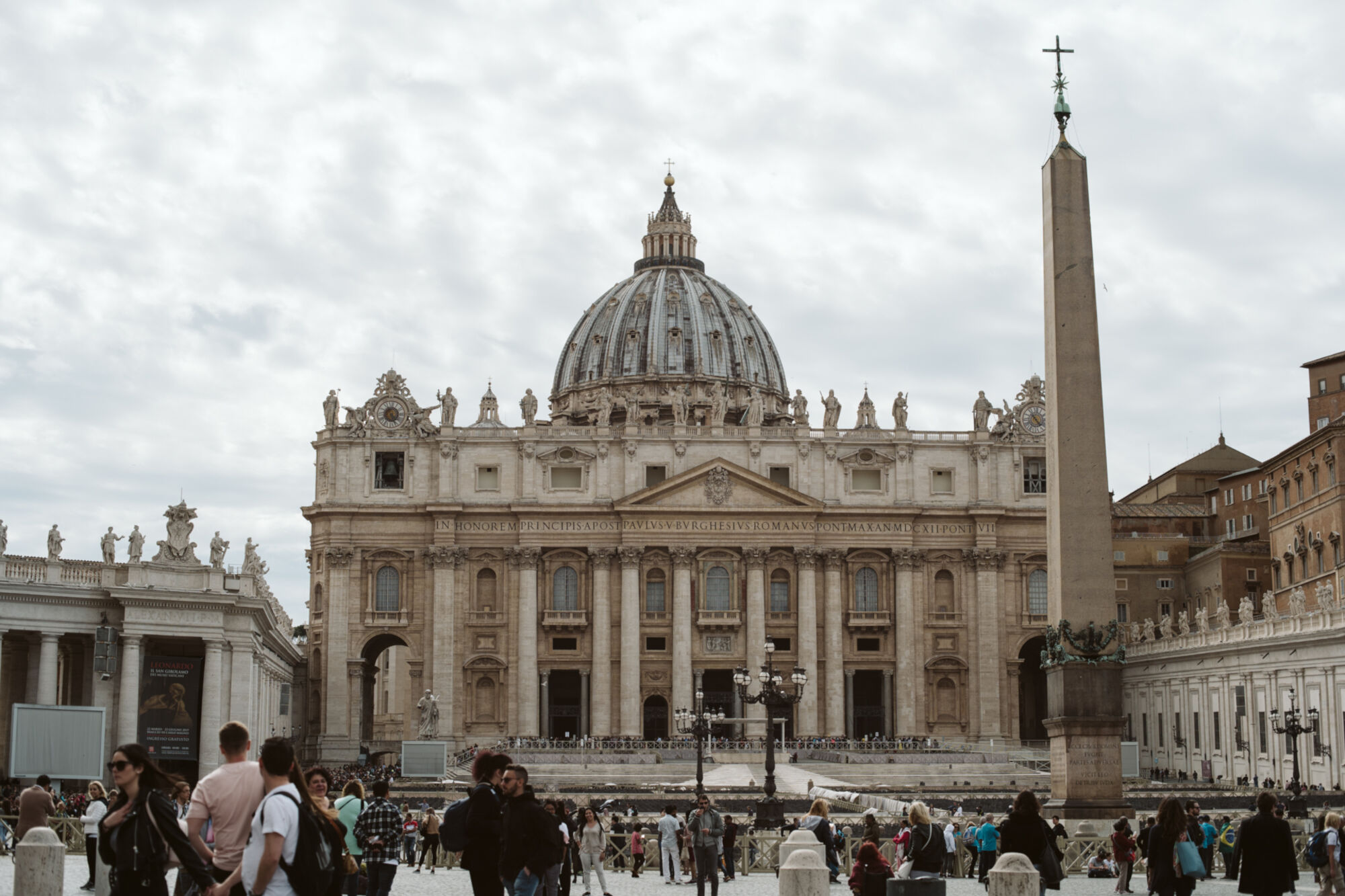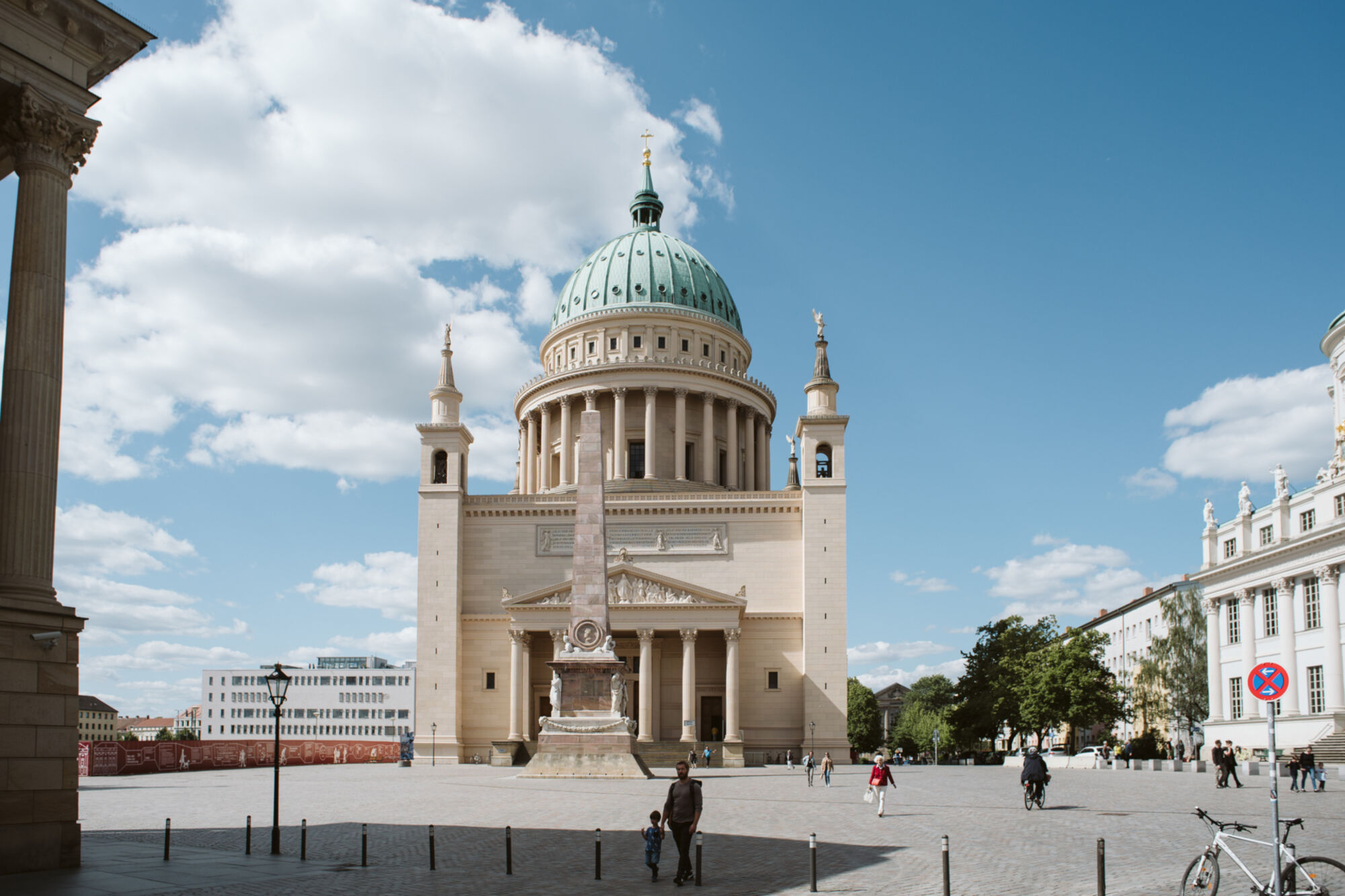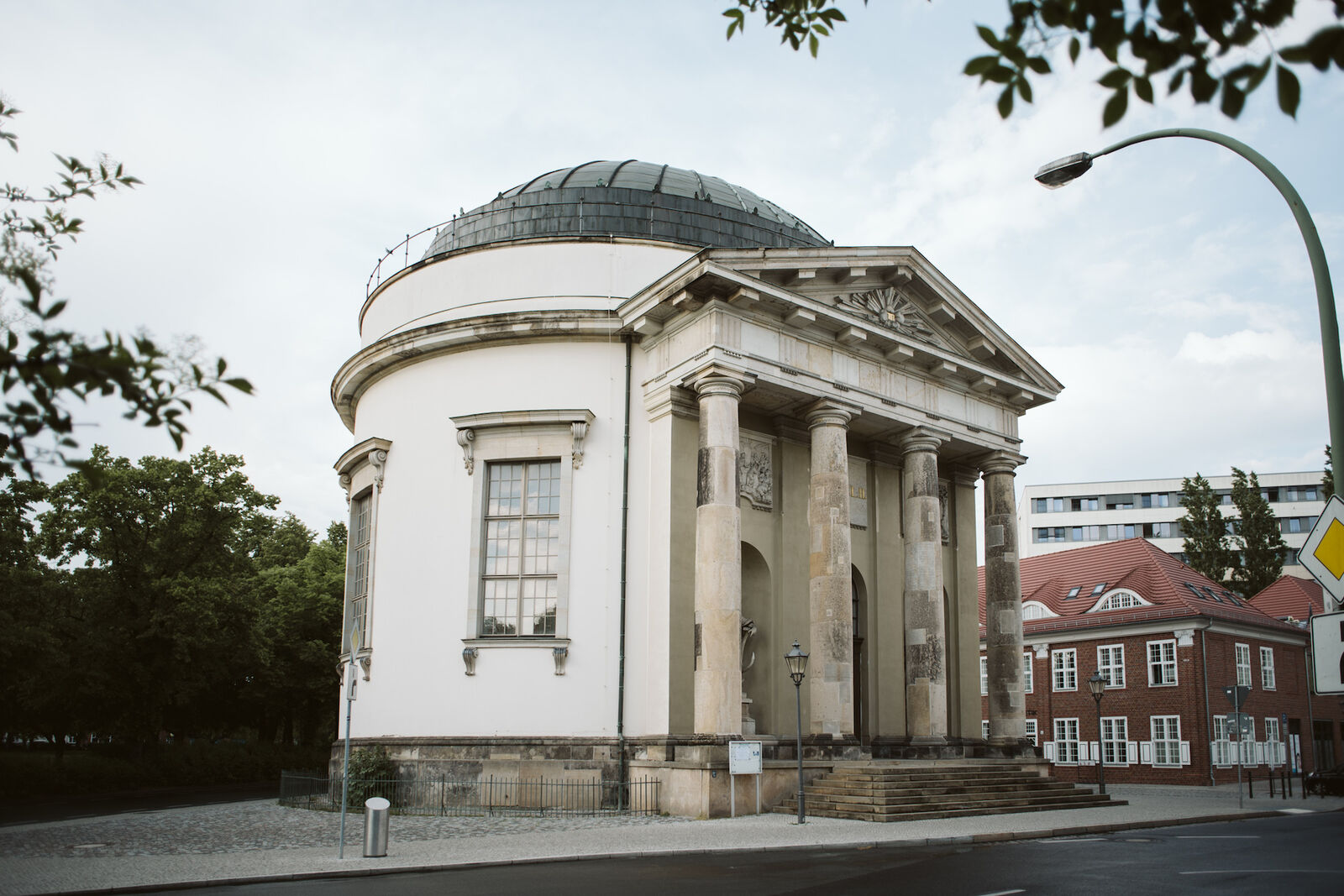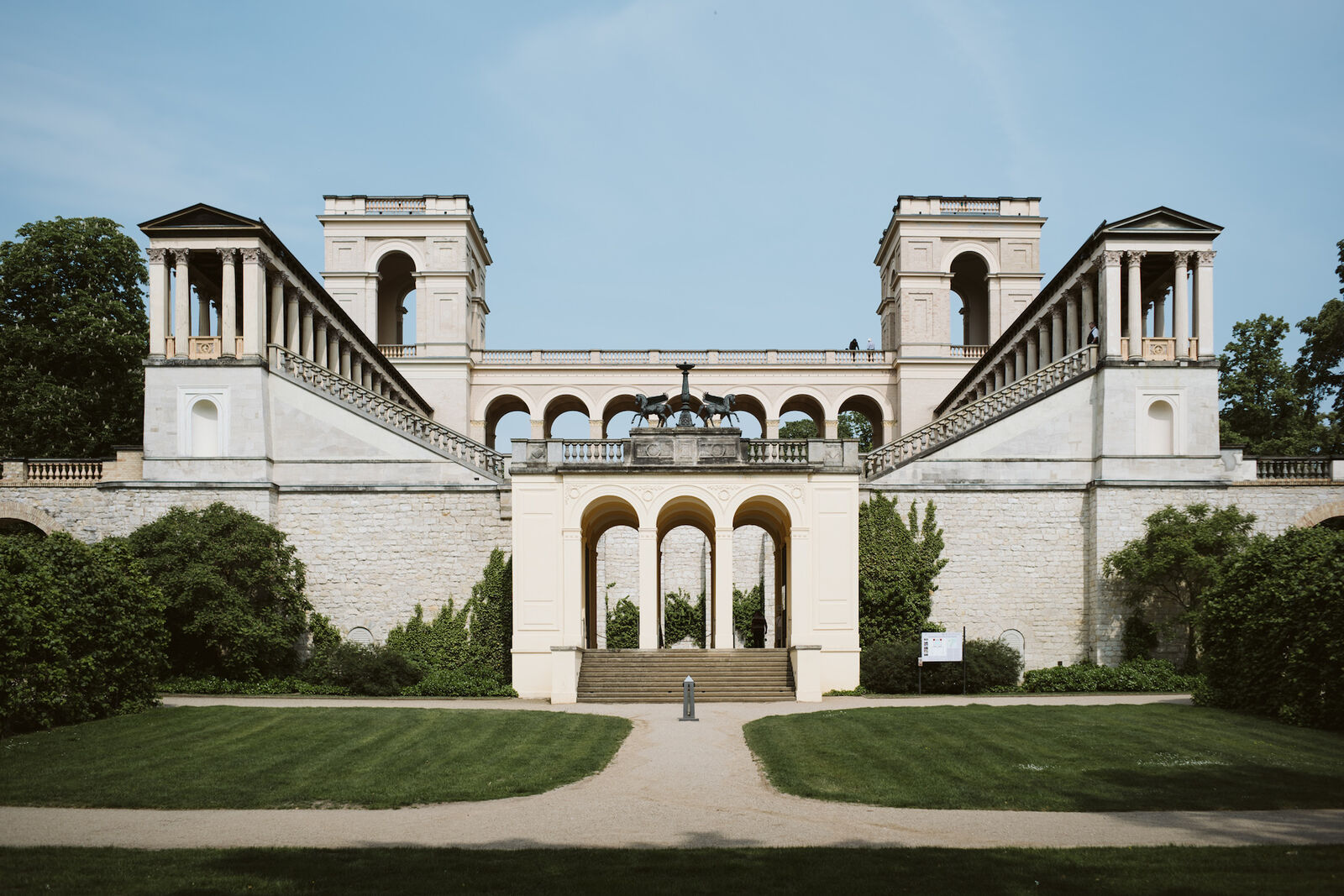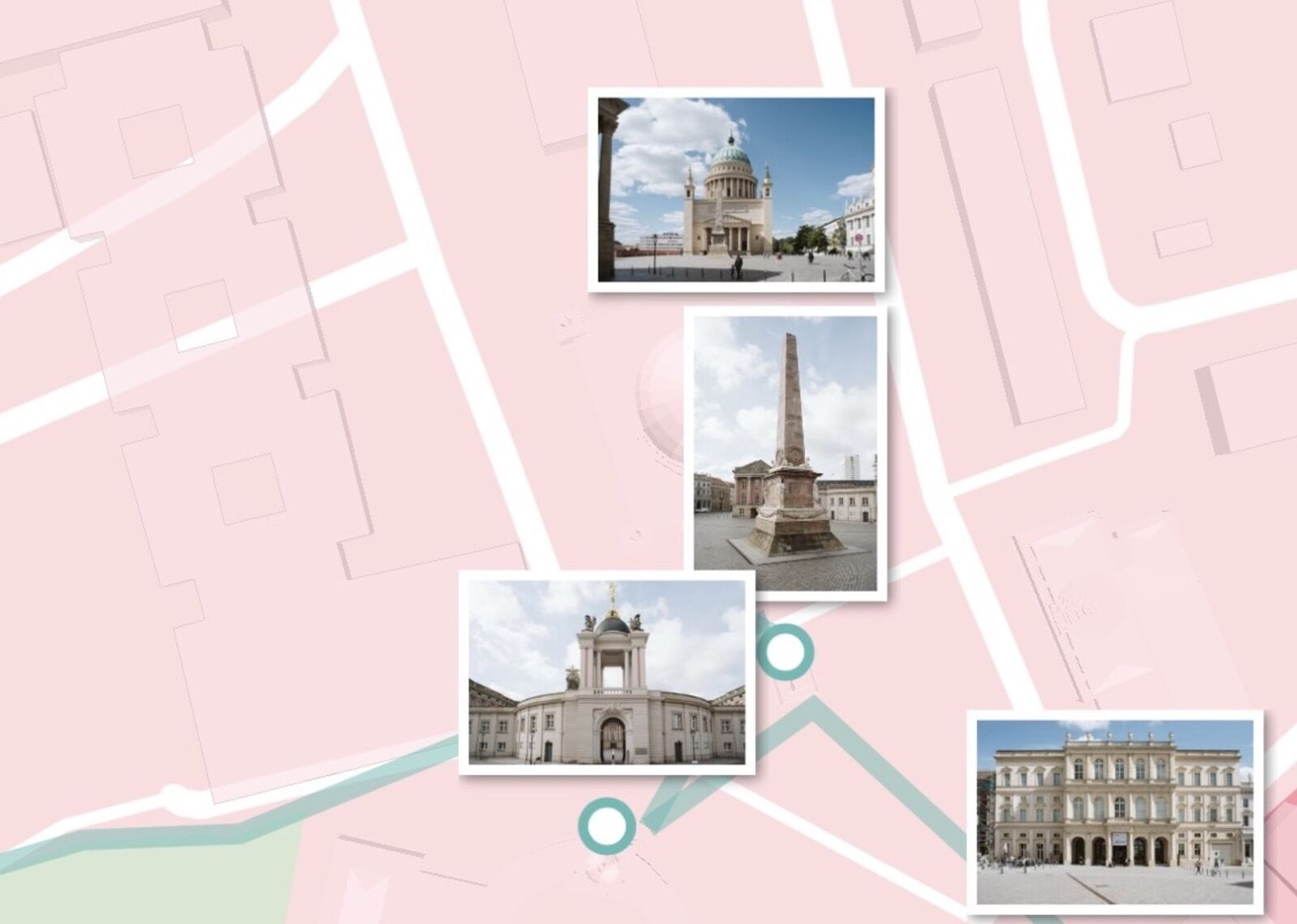
St. Nicholas Church / St. Peter's
St. Nicholas Church broods like a giant mother hen above the Alter Markt. Its huge dome, at 77 metres, towers over its surroundings and is visible far and wide. It almost seems to crush the square building below it. Quite obviously, the world's largest church, St. Peter's in Rome, was its model. That, too, adds a touch of the Eternal City to the Brandenburg royal seat and garrison town.
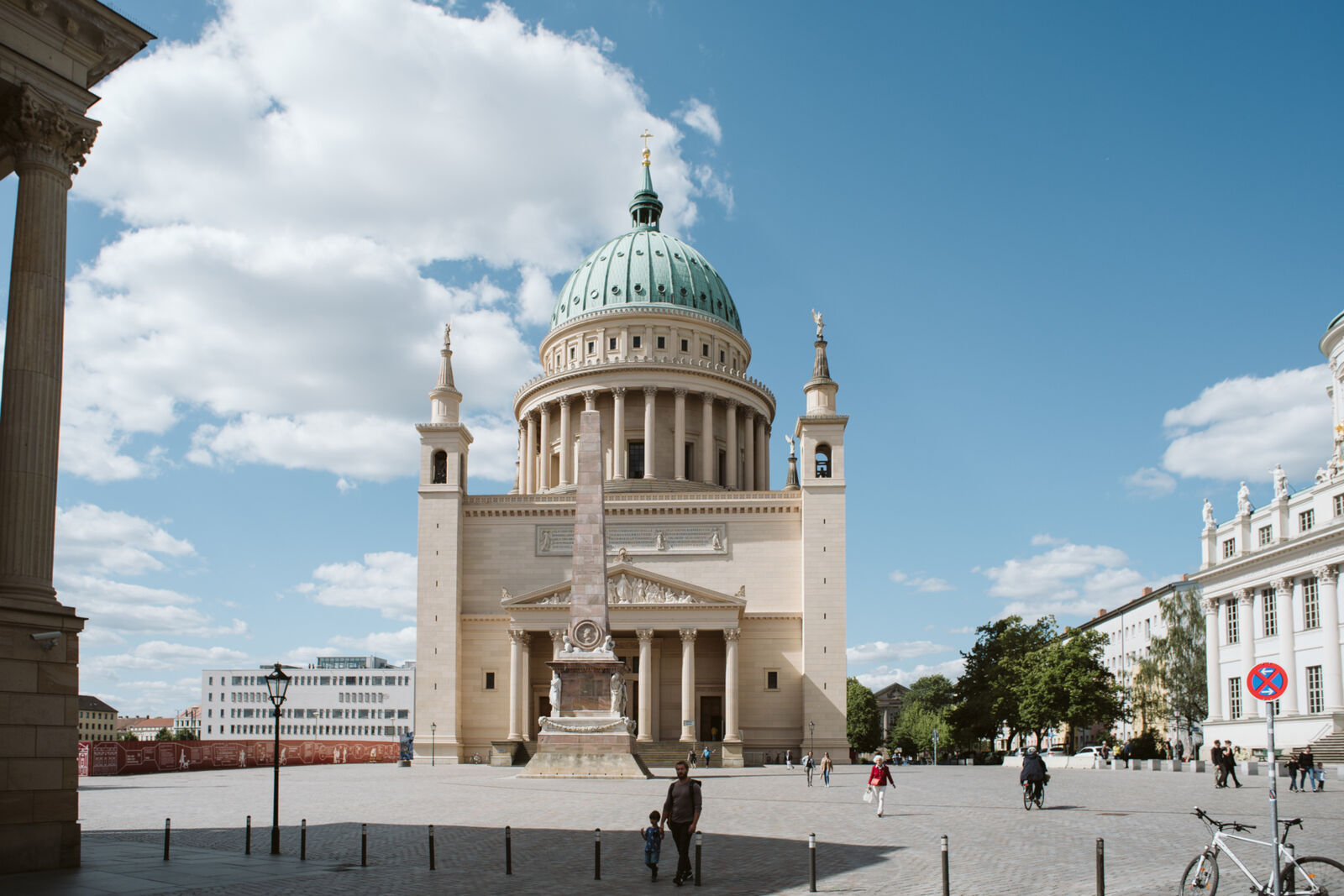
Henry Balaszeskul
Schinkel's design
The city's old Church of St Nicholas from 1753 was its predecessor. It had an impressive south façade modelled on the church of Santa Maria Maggiore in Rome. Frederick the Great had the façade added to the church as part of his Italianate design for the square. In 1795 the church burned down during repair work.
30 years later, in 1826, Karl Friedrich Schinkel designed the new church in neoclassical style. But Frederick William the Third, who commissioned it, was appalled at the cost. In addition, constructing a dome seemed very risky, given the marshy building site. The vaulted arches had already shown cracks shortly after the church was finished. That's why the cube-shaped church first had a flat gabled roof. Still, Schinkel had prepared the building for the later addition of a dome.
The formal opening in 1837 was a disaster. Schinkel didn't receive an invitation and stayed away from the consecration ceremony. The king disliked the acoustics. The sermon and singing of the choir were unclear to listeners. As a result, Frederick William left the church, exclaiming indignantly that the sound was better in any ordinary village church.
Completion, destruction and reconstruction
Not until the reign of Frederick William the Fourth did the church get its monumental dome. Two of Schinkel's disciples, Ludwig Persius and Friedrich August Stüler, completed the project after Schinkel's death. It was meant to give Potsdam's skyline an Italianate imprint.
The outer dome became a masterpiece of engineering technology: for the first time, a cast-iron rib structure was used in Prussia. For the inner dome, Persius used hollow brick vaulting to reduce the weight.
A hundred years later, during a bombing attack on Potsdam on April 14th, 1945, the dome remained unharmed at first. But artillery fire in the last days of April damaged the building so substantially that the dome collapsed and the portico broke apart. When it was rebuilt in the 1950s, St. Nicholas' Church was given a new dome, this time made of steel. From the colonnaded walkway below the dome, 42 metres up, there's a splendid view of Potsdam's city centre.
The St. Nicholas Church is one of the stops on the audio tour Italy in Potsdam, which was developed as a city tour for the Barberini App on the occasion of the exhibition Baroque Pathways (13.7.-6.10.2019). The tour, narrated by TV host Günther Jauch, invites visitors to discover 30 buildings and works of art around the Museum Barberini that were created in the 18th and 19th centuries based on Italian models. Download the Barberini App and let yourself be surprised by the many Italian facets of this city.
